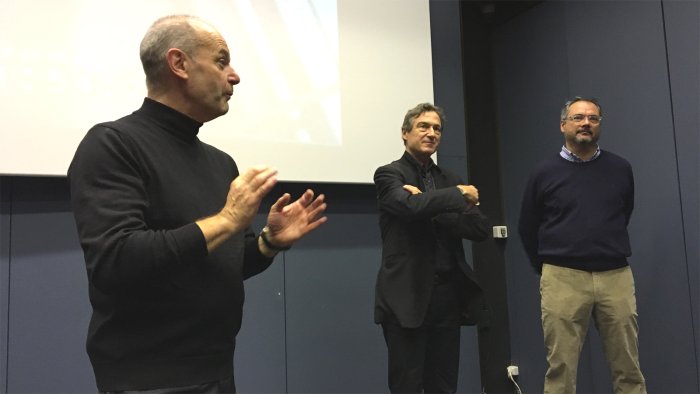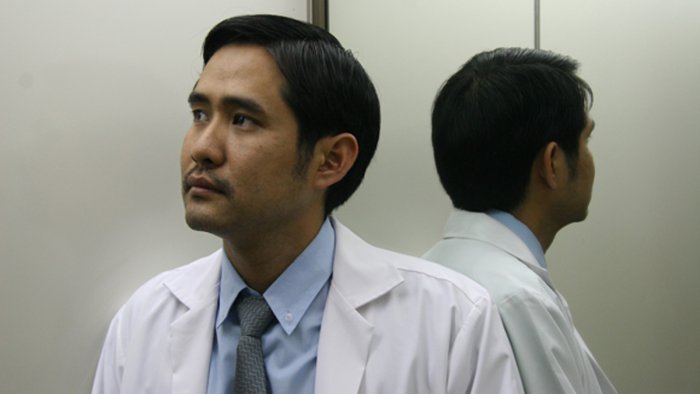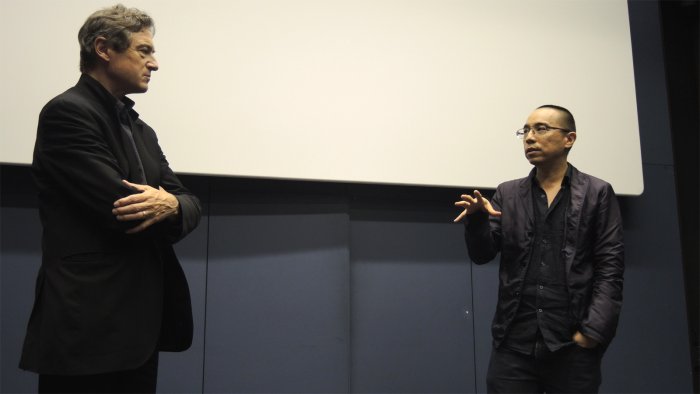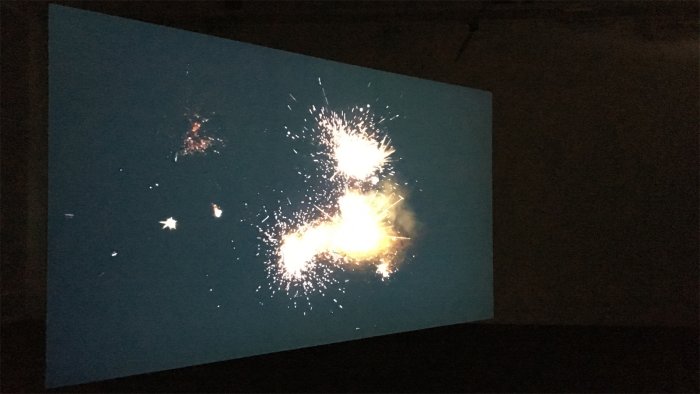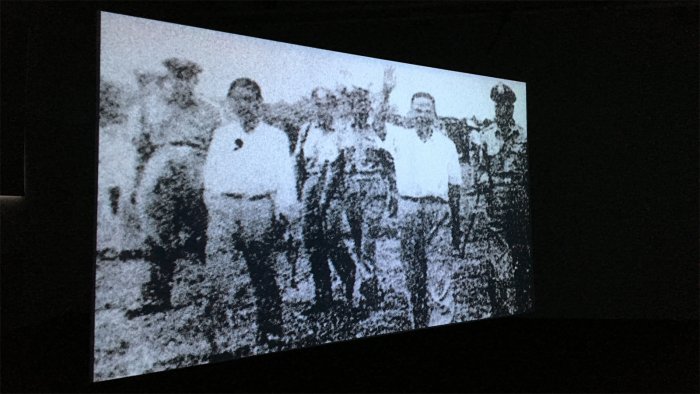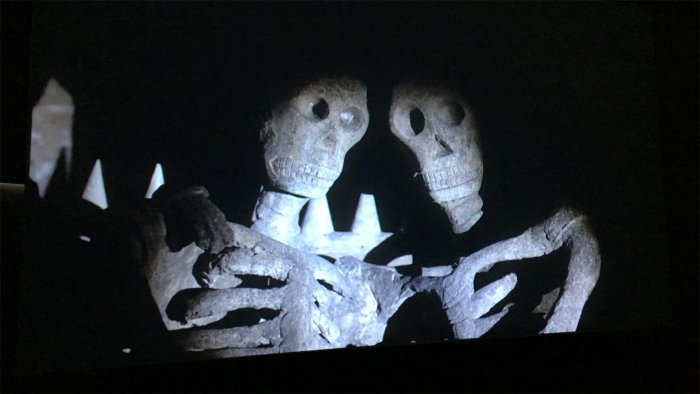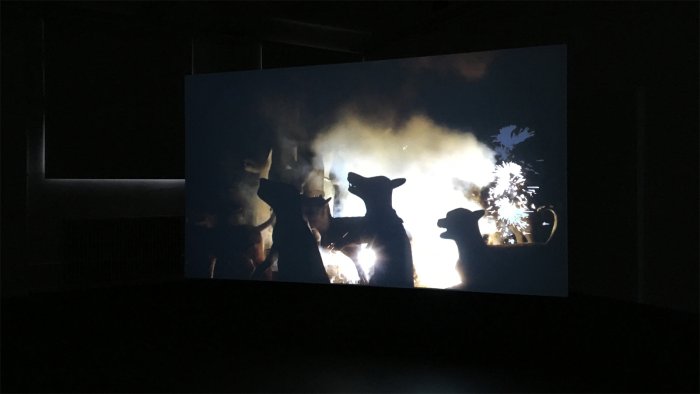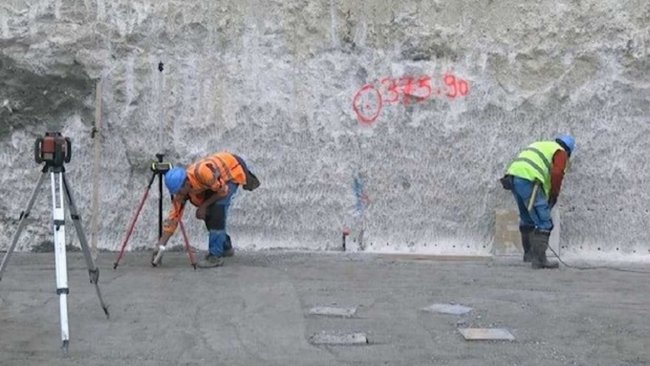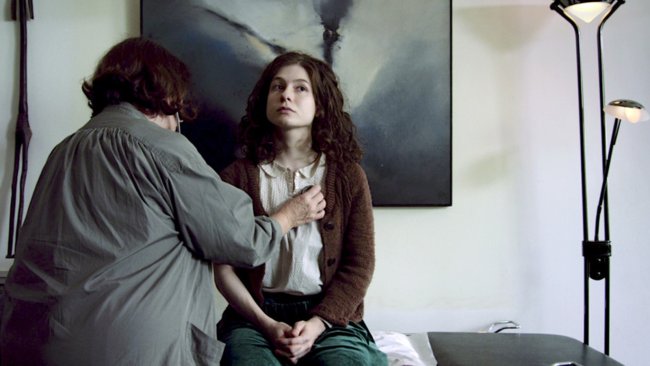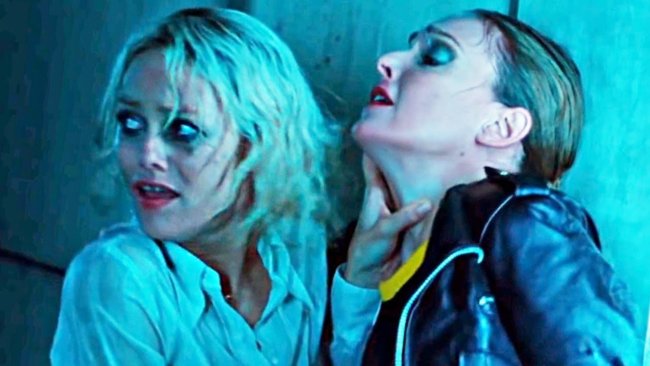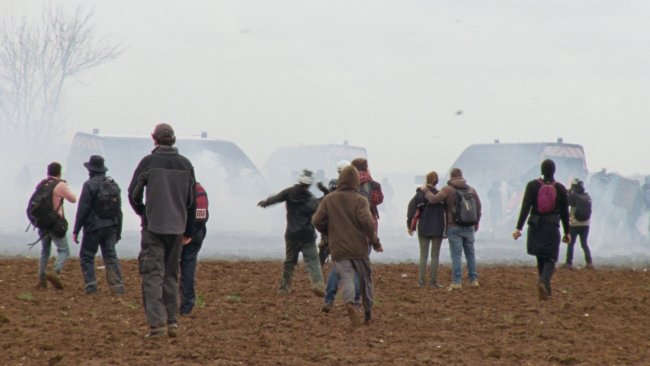Apichatpong Weerasethakul in Geneva
[…] The world we plunge into is a world of healing, where a piece of wisdom, a saying, a competent medical touch, a surgical intervention, a psychological interrogation, physical exercise, a loving kiss, even a song, are all variations of just one main healing flow.
[…] In this, what I called the “cosmic healing flow” is a fundamental element, as it puts their love on a particular level, where the physical and the spiritual elements are in perfect continuity. This continuity is the very mark of Apichatpong’s world.
[…] Apichatpong seems to want to stress the specificity of the dark room and its physical experience, insofar as the moving images that we see on the screen are equally immersed deep in darkness. In a way, the images on the screen are imitating the role of the screen in the space.
Text: Giuseppe Di Salvatore | Audio/Video: Ruth Baettig
Podcast
Apichatpong Weerasethakul at the HEAD Genève
Recorded on November, 2016
Find a list of all our Podcasts here.
In the basement of the Haute école d’art et de design (HEAD) of Geneva we discovered two treasures, both presented by Apichatpong Weerasethakul. Their positioning seems perfectly suited to a school institution, insofar as they can serve as good basis for any apprentice filmmaker. Not only are they two wonderful films, but they are also profound meditations on the proper grammar of cinema: time, vision, memory, light and dark, are some of the main themes approached through these films by the Thai filmmaker.
On this evening at the HEAD, the director Jean-Pierre Greff and the director of the cinema section, Jean Perret, were opening a renewed screening room that has been dedicated to Robert Kramer, whose legacy is of particular concern to the cinema section of the HEAD. Kramer’s widow was present and gave a moving speech to motivate the youngest generation of filmmakers. In this context, the screening of Apichatpong’s movie Syndromes and a Century (2006), proposed by Bertrand Bacqué, was particularly appropriate, as this movie is an intimate homage to the filmmaker’s parents, to their memories, and their stories: it is a work of legacy. But it also provided the occasion for Apichatpong to bring his world and aesthetics forward; after watching it again in Geneva, his first response was that it is his favourite film! The world we plunge into is a world of healing, where a piece of wisdom, a saying, a competent medical touch, a surgical intervention, a psychological interrogation, physical exercise, a loving kiss, even a song, are all variations of just one main healing flow. Even if the entire story takes place inside two hospitals, disease and suffering remain in the background. The need for healing covers a much broader range, here, than just the physical need: it is an existential one. It is not as much a question of finding a cure, but a question of care.
The movie is structured in two parts that express the two stories of the mother and the father. But, perhaps one should speak of two points of view, two different collections of memories, almost two sensibilities, which both retell the same story. In this, Apichatpong plays with repetitions and variations, building a complex and harmonic counterpoint. Not only does Apichatpong create the two stories through the memories of his parents, but we also are made to remember the first story when the second story is presented, because of their similar patterns and repetition. During the screening, the spectator has the opportunity to compare the two stories and practise their own memory, thus doubling the layers of memory, of which the film is made. Additionally, the 35mm cinematography arouses in us, today, an emotive texture that is bound to the act of remembering. The polarization of a rural and urban location in Thailand almost gives the impression of observing two different periods in time. However, even if we recognize the synchronicity of the two versions of the story, their splitting makes the sense of time expand.
Syndromes and a Century is not only a film about a cosmic healing flow, as well as memory and time, but it is also a film about love. The love of Apichatpong’s parents is not directly the love between them, but a sort of previous erotization of any relationship they have, independently of one another. In this, what I called the “cosmic healing flow” is a fundamental element, as it puts their love on a particular level, where the physical and the spiritual elements are in perfect continuity. This continuity is the very mark of Apichatpong’s world; and here, it has a specific effect on the question of love. In this movie (but not only in this one), the love between two persons is interlaced with a more general love between people, which is erotic and tender at the same time. There is a specific choral participation in Apichatpong’s stories that cannot but embrace any loving couple too. This important aspect of his world seems to be reinforced by the fact that the camera explicitly avoids close-ups, and their violence. The image we face allows us the freedom to see many things, the freedom to choose our own path within the scenes. We could easily recognize this same pattern of freedom when we consider the dramaturgical structure of his stories, whose linear nature remains always open to digressions and potential alternative plots.
Syndromes and a Century was screened at the HEAD in collaboration with the Festival Tous écrans, which has dedicated a retrospective to the Thai filmmaker. The other treasure in the basement of the HEAD, the filmic installation Fireworks (Archives), is the result of a collaboration with the Biennale de l’Image en Mouvement. Apichatpong Weerasethakul is the living connection between these two important film events in Geneva. With this installative work, where a 6’40’’ film is projected in loop, he offers a very complex reflection, which puts his typical themes – memory, history, vision, spiritual presence – in the form of a spatial experience.
If, in the cinema, the “black box” is simply a framework, the dark room of the exhibition space presents an interactive element for the spectator to become an active visitor. The image does not only emerge from the darkness of our own mental experience, but also out of the darkness of our bodily experience. Apichatpong seems to want to stress the specificity of the dark room and its physical experience, insofar as the moving images that we see on the screen are equally immersed deep in darkness. In a way, the images on the screen are imitating the role of the screen in the space. The status of the image is no longer that of just sheer existence, but it comes to us from the darkness we live in.
The images we see come out through the light of fireworks, photographic flashes, and torches. The emotions of joy and fear mix as we go from the imagination of a feast to that of a night expedition; history itself is the object of celebration and cautious exploration at the same time. Our relationship to history works in two directions: the past reveals itself to us, but it is also the object of our inquiry. And the same double movement relates to the cinematic image as well, which is both the object that is sought and the subject that arrives – that arrives like an epiphany. In his Fireworks (Archives), Apichatpong projects the act of projecting, in both history and cinema. In the cinema, images are physically projected to be observed, whereas in our relationship to history, we shed light on specific artefacts and event. In both cases, the projections imply an effort, or a particular form of violence. In this film, the images and fragments of Thai history are delivered with aggressive flashes and fireworks against the dark night, thus combining the cruelty of war and the mystery of epiphany.
Fireworks (Archives) appears to me, at least formally, a strong counterweight to the soothing experience of Syndromes and a Century. The movie builds a cinematic grammar made using memory, the experience of time, the cosmic healing flow, the continuity of the physical and the spiritual, and a diffused love; the filmic installation embodies all of this in a dramatic spatial experience that expresses the very essence of projecting moving images. The spectator’s freedom in Syndromes and a Century is on the screen, whereas the freedom of the visitor to Fireworks (Archives) is within the room. Thanks to Apichatpong Weerasethakul, the basement of the HEAD in Geneva provides us the basic coordinates of cinema in their most liberal form.
Info
Syndrome and a Century | Film | Apichatpong Weerasethakul | THA-AT-FR 2006 | 105’ | Salle Kramer, HEAD Genève | Festival Tous écrans Genève
Fireworks (Archives) | Exhibition | Apichatpong Weerasethakul | HEAD Genève | Biennale de l’Image en Mouvement (BIM) Genève
First published: November 18, 2016
